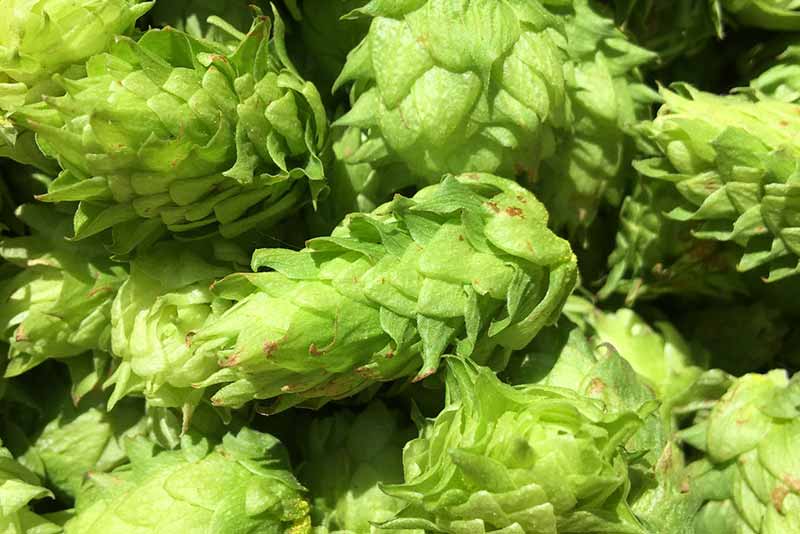
We’ve written extensively about popular hops across the globe as part of this series, including Galaxy and Nectaron in the Southern Hemisphere and Mosaic and Centennial in North America. And while those hops have each established themselves as go-to varieties for many brewers, they have a long way to go to reach the staying power of arguably the GOAT of the new wave of hops: Citra.
Since it was developed and released by the Hop Breeding Company (HBC) in 2007, the Citra hop quickly rose to superstar status in the brewing industry and sits at the top of most hops harvested in North America, according to the 2022 Statistical Report by the Hop Growers of America.
The data for 2023 is still being compiled, but in 2022, Citra accounted for more than twenty percent of cultivated hops, 12,044 acres in total, nearly double that of the second-most Mosaic. That marked five consecutive years for Citra at the top of the list.
What makes this hop so special? We chatted with Citra experts BSG Product Portfolio Manager and Commercial Hop Specialist Matt Johnson and Toppling Goliath Brewmaster Michael Saboe to understand the history of Citra, how best to use it, and what flavors and aromas shine in a finished beer.
(Above photography courtesy of Altitude Brewing & Supply)
Affordable, Industry-Leading Brewery Software
What Are the Ancestry and Analytics of Citra Hops?
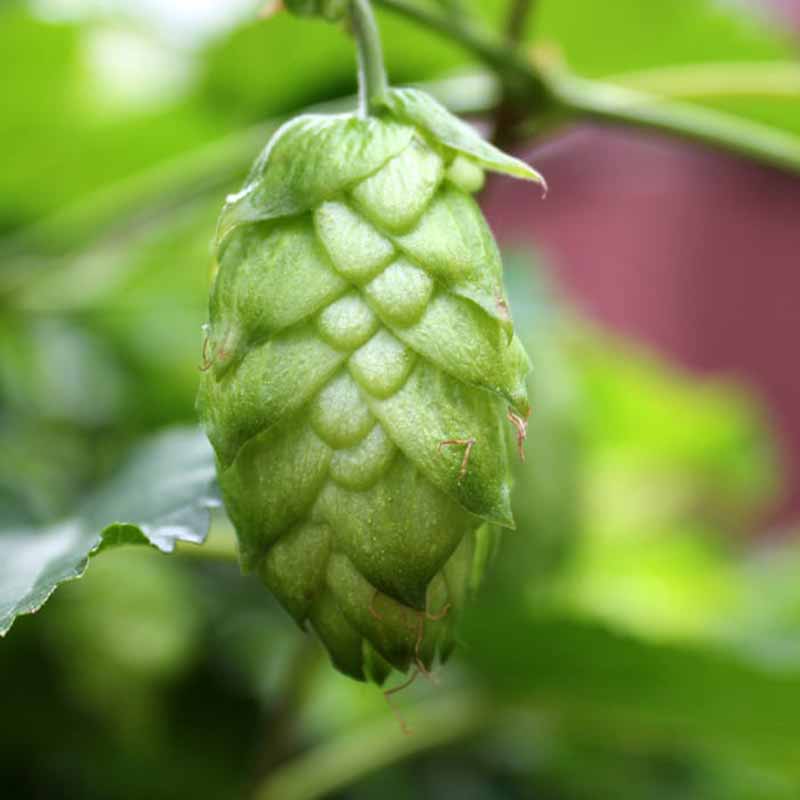
Photography courtesy of Selected Brewing Ingredients
Johnson, who has been brewing for a quarter century and was the brewmaster at Karl Strauss for about a dozen years, explains how longtime breeder Gene Probasco first developed Citra in 1990 through the HBC.
“It takes a long time to go from breeding to into the market and selling,” says Johnson, noting it took Citra seventeen years to get to market. “There are a lot of things involved—it’s gotta be viable, enough hops per acre; it’s gotta be desirable to the brewer; and it’s gotta hold up to pest, mildew, and drought.”
Johnson adds that when brewers first experimented with Citra, much of the industry made more malt-forward, English-style beers. Almost two decades later, when Citra came to the market, the West Coast-style beers popular in the aughts featured fruit, citrus, and tropical notes.
“Ever since then, it’s risen in acreage, growth, and use,” Johnson says of the hop, named by Jason Perrault of Perrault Farms. “Around 2017, it took over Cascade as the most planted or grown hop in the U.S. Citra is now and still is bigger than Cascade to this day. It’s won awards. Customers even know the hop by name.”
Johnson adds, “Growers and breeders see what Citra was like and are chasing it with other hops like Mosaic and Galaxy. The best form of flattery is trying to copy.”
The Citra hop is higher in alpha acids, ranging from eleven percent to fourteen percent.
“It can be a dual-purpose hop, but a lot of brewers don’t want to waste it in the bittering,” Johnson says.
What Characteristics Come Through the Most in Citra Hops?
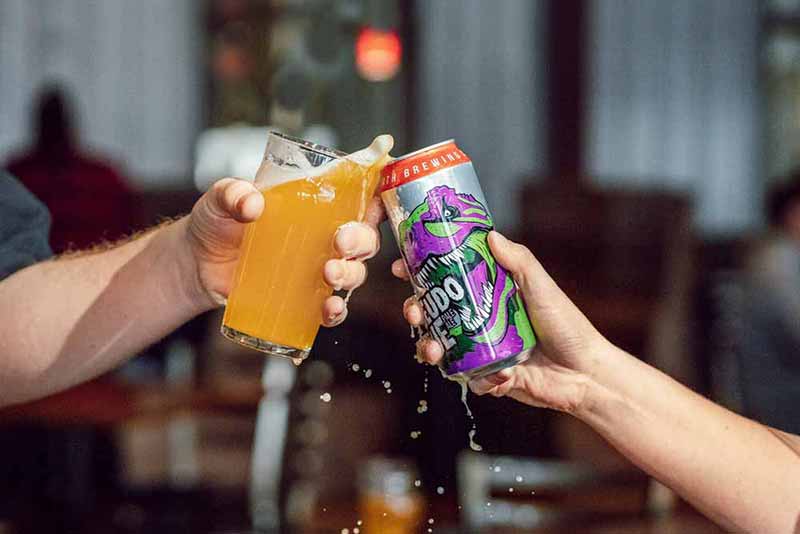
Photography courtesy of Toppling Goliath Brewing Co.
Naturally, you’ll find intense aromatics of fruitiness and citrus in the Citra hop, but you’ll also get tropical notes.
“I used it for that pink grapefruit and an orange pith bitter citrus,” Johnson says. “That’s what I’m looking for and using it for: pink grapefruit fruitiness—more bitter than sweet but pleasant citrus and tropical aroma. … I don’t think it’s too bitter per se. With this, it’s in the flavor and aroma, and not in the actual hop bitterness like a West Coast palate wrecker.”
Johnson adds, “Citra—especially in dry hop—takes that away and makes you want to keep drinking the IPA. It smells great, and then you get that pink grapefruit and orange pith that makes you want to drink more.”
Saboe says that Toppling Goliath, whose single-hop Citra-focused Pseudo Sue has become a pinnacle expression of the hop, sends a team to select the thousands of pounds of Citra they go through each year. He says analytics can go far, but the human sensory is key.
“Hop suppliers provide the analytical breakdown. That’s helpful, but human sensory leads the way,” he says. “You never get enough out of analytics. At some point in time, there might be [enough from the analytics], but for now, human sensory has to lead the way, and analytics backs it up.”
Saboe says they are looking for a specific type of Citra that shines bright with a citrusy orange creamsicle characteristic and undertones of mango and passion fruit. He adds that finding just that can be difficult based on several variables, such as temperature and harvest location, among others.
“We need Citra high in oils, but high in the right oils [to get that creamsicle characteristic],” Saboe says. “We spend a full day, if not multiple days, sampling lots until we find enough poundage of what we’re looking for. That just shows the importance of human sensory.”
Where in the Brewing Process Should You Use Citra Hops?
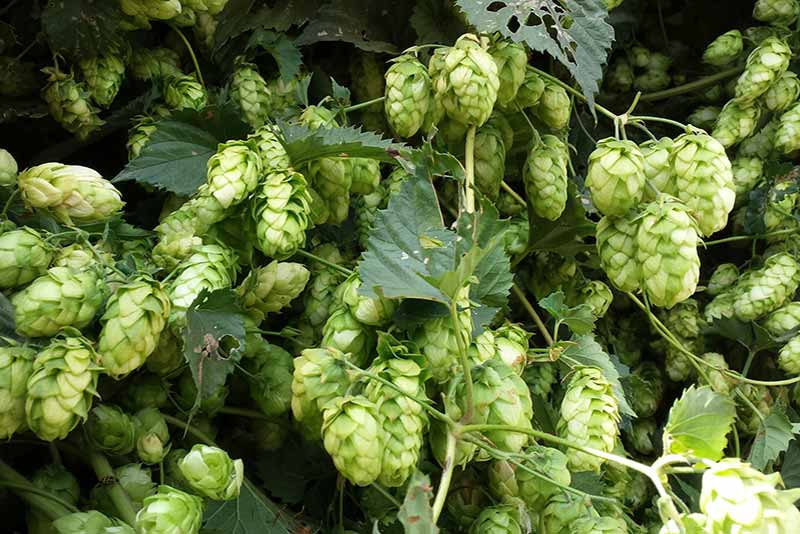
Photography courtesy of All About Beer
Saboe admits that the high-alpha-acid Citra hop is versatile, and you can have positive results throughout, but he says they have a spot where they like it the most.
“We most typically prefer to use it as a later addition in the hot side,” he says. “Mainly as a whirlpool addition.”
He adds that they like to use it in the fermenter as part of the entire fermentation but at a lower dosage so they don’t hinder yeast viability.
“Sometimes we use variations of Citra like cryo and Incognito as a fermentation dose,” he says.
Johnson opts for the dry hop. And you have options there.
“You can dry hop it on its own or with other hops to create a great base of citrusy, tropically, almost stone fruit [flavors and aromas],” Johnson says. “It gives a great aroma to any beer. Even with a small dry hop, you’ll get a great fruit aroma there.”
In the boil, though, Johnson isn’t much of a fan.
“I think it’s a little harsh,” he says. “The best use for it is in dry hop, early or late. I’ve used it on a second dry hop, first dry hop, and a biotransforming dry hop for our hazy as well.”
Saboe echoes that and says using a certain type of Citra hop during the dry hop charges is essential.
“There is no substitute for a true T-90 Citra dry hop,” he says. “Everything else adds layers of flavors.”
Johnson says there’s a limit to how much you should dry hop, though, citing two pounds per barrel as the magic number.
“Any more and you are not getting any extra aroma and flavor but wasting money by adding expensive hops,” Johnson explains. “I have noticed that dry hopping more than two pounds per barrel, you can get more vegetal notes from more hops. All of the dry-hopped beers I have done in the past were at that rate and had excellent aroma and flavor.”
Which Styles of Beer Work Best for Citra Hops?
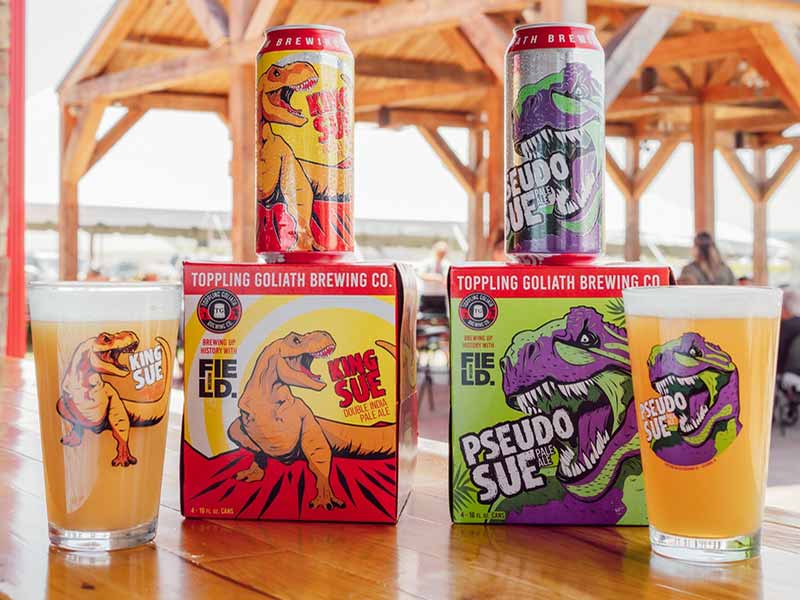
Photography courtesy of @topplingbrews
Citra is useful for any American-style hop-forward brew, Johnson says, including pale ales and IPAs, whether West Coast, American, or hazy. It could also be used in lighter styles.
“You could also put it sparingly in a lager,” he says. “And there are a couple of pilsner styles out there that have slight bitterness in the flavor and aroma that is nice.”
Johnson points to a great example: Toppling Goliath’s Pseudo Sue. Saboe says they’ve been making that hazy beer since 2011, when it was rare to see that style.
“We felt we got the best overall profile of it that way,” Saboe says. “Our target goal was to have the look of the beer emulate what they’re getting from the hop [flavor].”
Saboe says Citra can work well in non-hazy beers like Cold IPAs, but some other clear IPAs don’t showcase the hop as much.
“When you [use it in West Coast or clear IPAs], you alter some of the character in the hop,” he says. “The hop profile will be there, but it does change it—I get a gummy bear type of character from Citra [in those beers].”
Saboe adds, “There are different styles you could use it in, but I wouldn’t find it particularly valuable in most others.”



